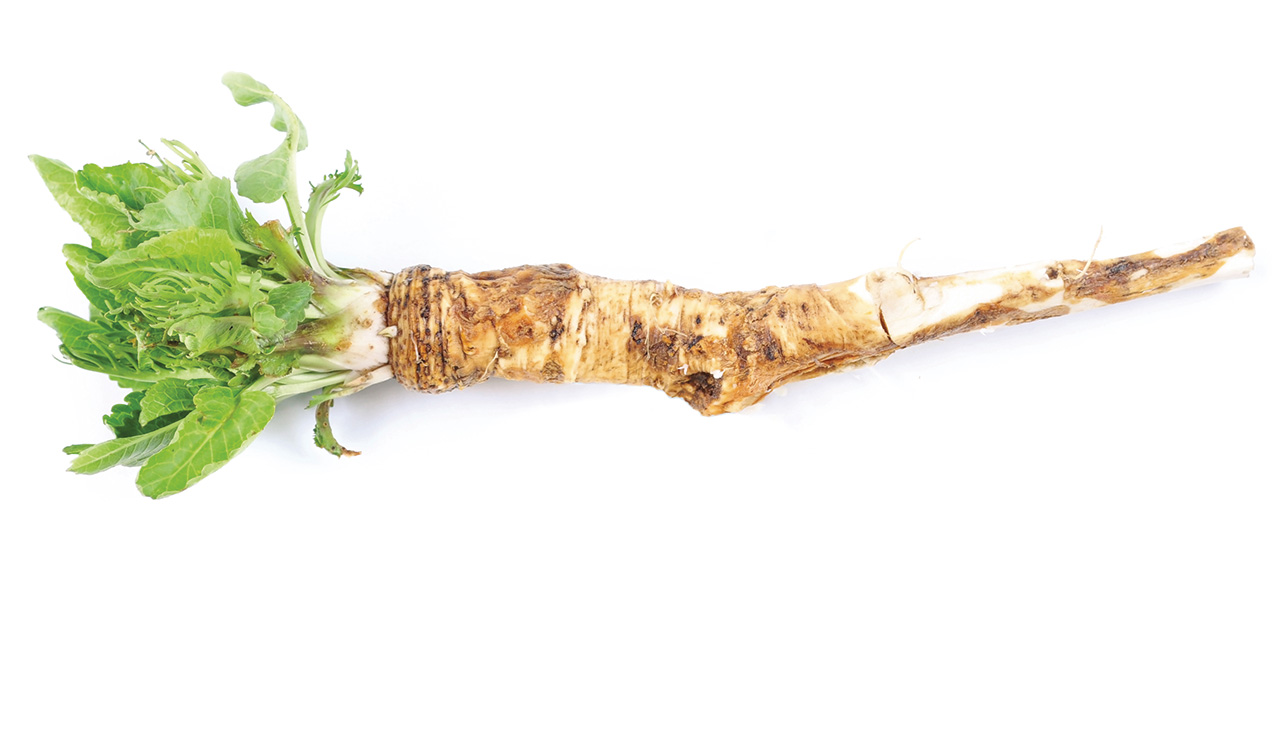Horseradish Lies
Neither horse nor radish, horseradish is just a liar food, quips Jimmy Fallon as he pens a thank you letter to the herb on The Tonight Show. The spicy root is a member of the brassica family, related to mustard, cabbage, radishes and wasabi (Japanese horseradish.) While it can be found in raw form in grocery stores, more often than not, it's tucked away in jars of condiments — cocktail sauce, horseradish cream, mustard or preserved in vinegar as prepared horseradish.
The ancient Egyptians used horseradish to spice up their love lives and to help with lower back pain (possibly in that order.) It continues to be used as one of the bitters consumed during the Passover seder, symbolizing the suffering enslaved Jews endured in Egypt. Every June in Collinsville, Ill, where 60 per cent of the world's supply of horseradish is grown, the city hosts the International Horseradish Festival, complete with root tossing and horseradish eating competitions.
Growing horseradish is easy, but getting rid of it can be challenging. Get a piece of fresh horseradish root or find a potted plant at local garden stores. In the spring, find a sunny spot and plant the root leaf end up, a few inches deep. Horseradish enjoys soil that is fairly loose with good drainage. If you grow tomatoes, the same type of soil and water consumption applies to this gnarly root. A perennial plant, horseradish will go dormant in winter, and as long as you've left some of the root behind (it’s actually difficult to remove it all) it will pop up again in the spring.
The young edible leaves are peppery and slightly bitter, like arugula and can be used in a salad or as an herb. The root is typically harvested from October to early November after the first significant frost. Similar to garlic, the more you chop or grate it, the spicier it gets — but hey, if you’re growing horseradish, you probably don’t mind a little heat.
Horseradish dressing
You can adjust this recipe to add as much horseradish as your nasal passages can handle, then put it over everything — from greens and bean salads to steak, salmon and roasted vegetables.
1 cup olive oil
½ cup white wine vinegar
¼ cup fresh horseradish, grated
1 teaspoon Dijon mustard
1 teaspoon lemon zest
1 teaspoon honey
2 tablespoons fresh parsley, rough chopped
¼ teaspoon chiles, optional
Pinch of salt and pepper
Add all the ingredients, except the parsley into a food processor and blend for a few seconds until combined, or if you like it chunky, you can whisk it by hand in a mixing bowl. Add the chopped parsley and stir together. Pour the dressing into a jar and use right away or keep it in the refrigerator for up to a couple weeks.
Fresh horseradish cocktail sauce
Fresh horseradish makes great cocktail sauce. This recipe uses strained tomato instead of ketchup, so it’s less sweet. Use it as a dip for seafood, a topping for meatloaf and burgers or drop a dollop in your Caesar.
1 cup passata or tomato purée
2 tablespoons horseradish, fresh grated
1 teaspoon honey
½ teaspoon lemon zest
2 teaspoons lemon juice
1 teaspoon Worcestershire sauce
Pinch of salt and pepper
Grate the horseradish root in to a bowl, then add all the other ingredients and mix well. Adjust the seasoning to taste.





